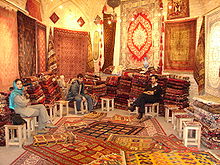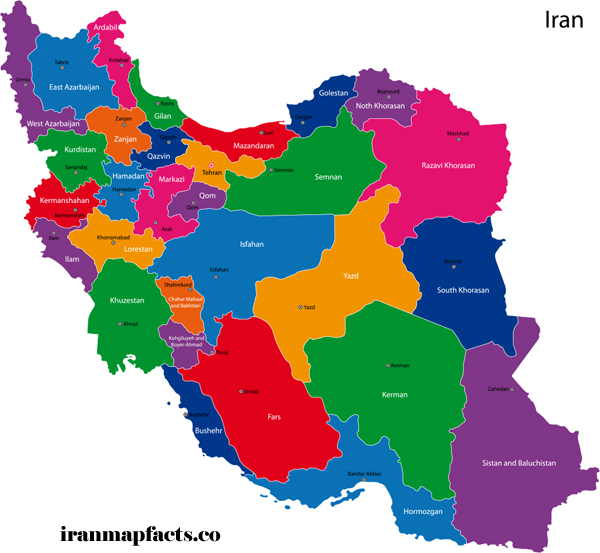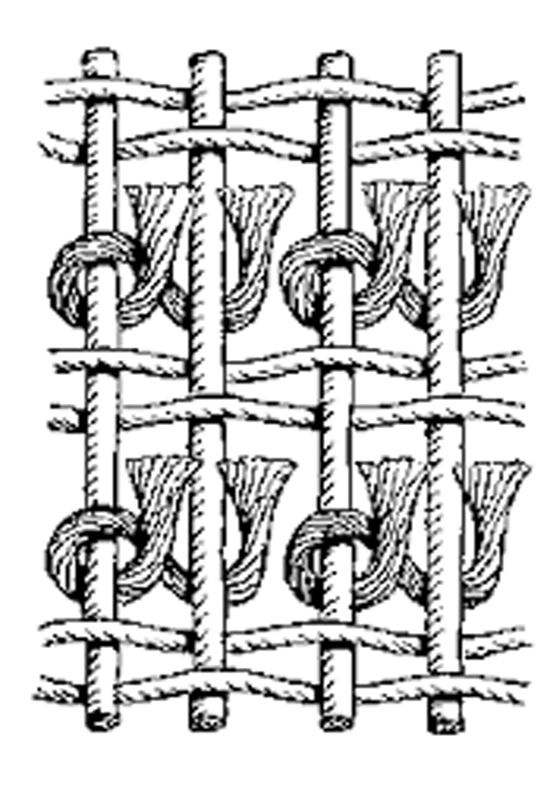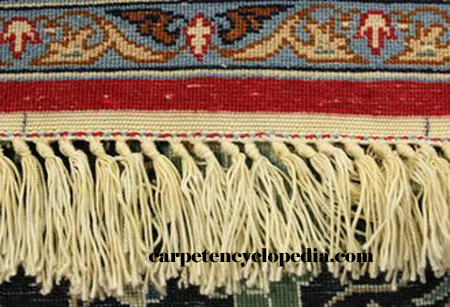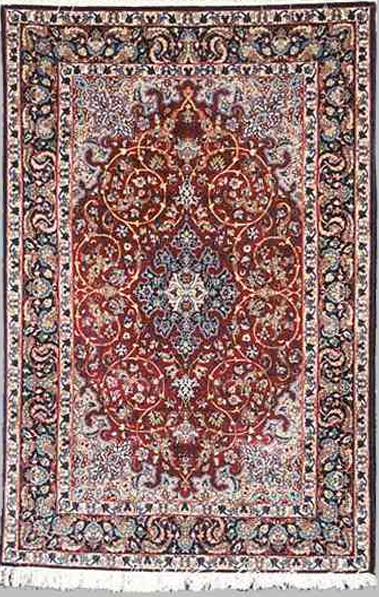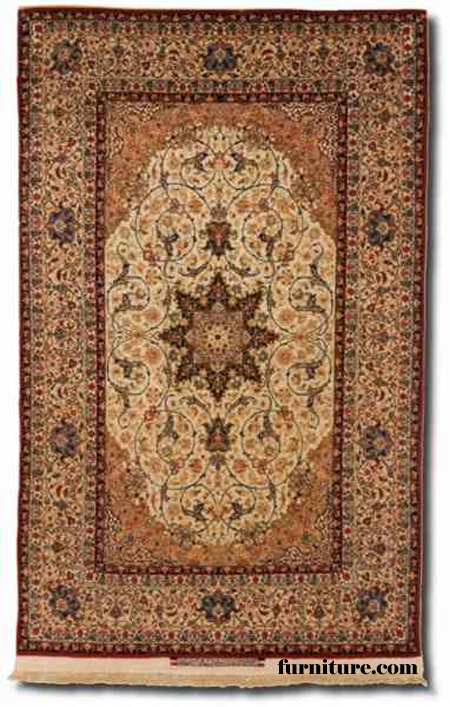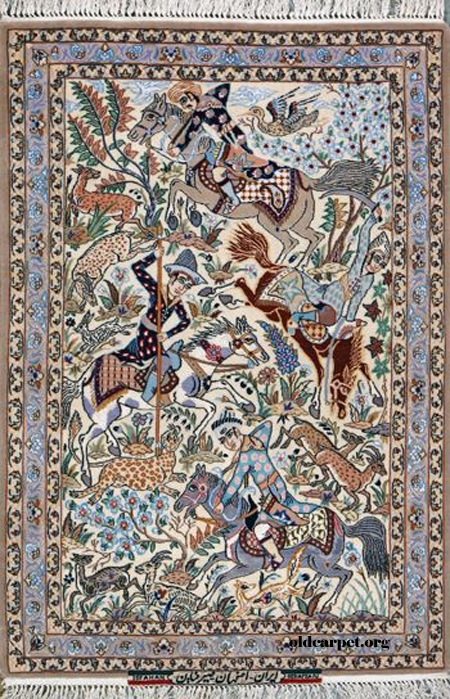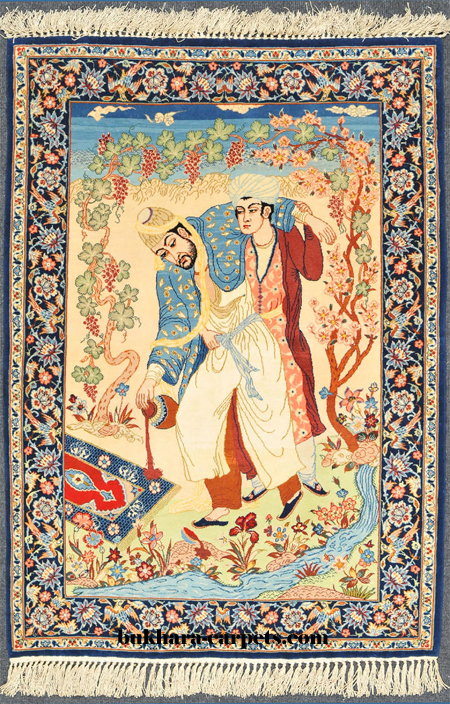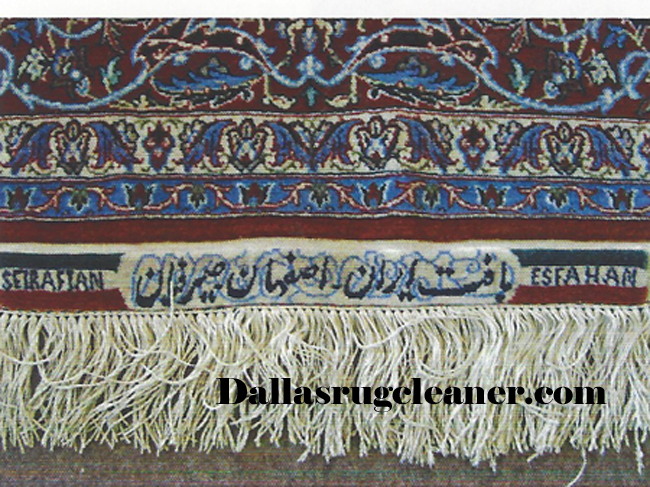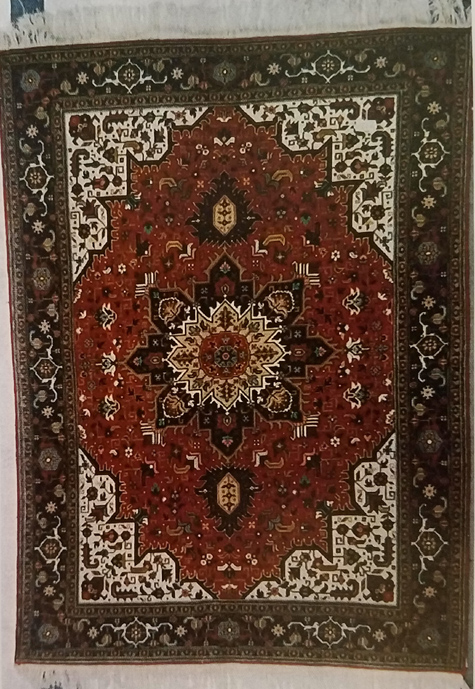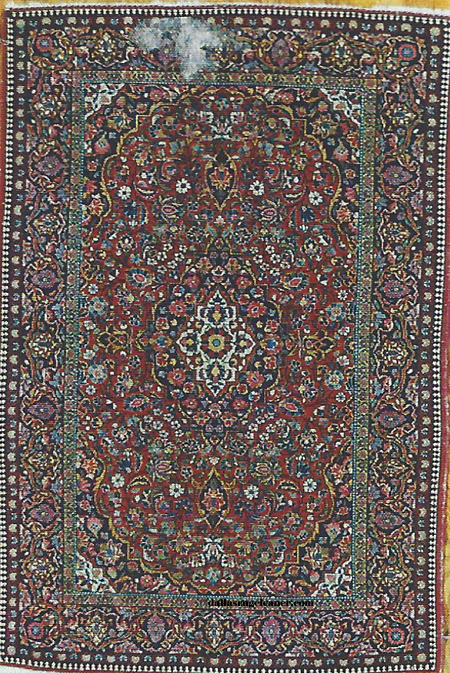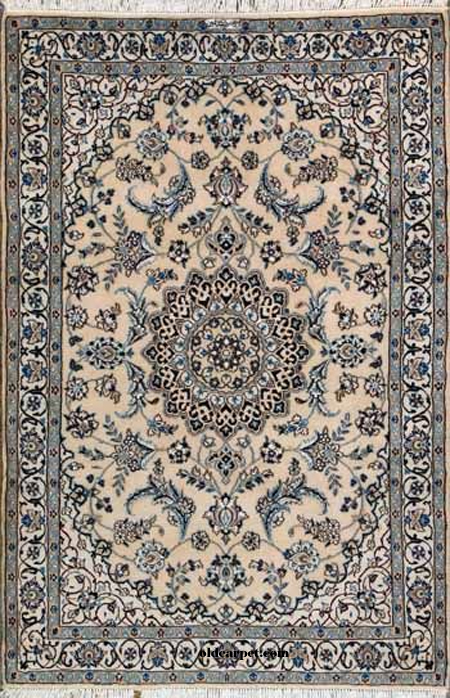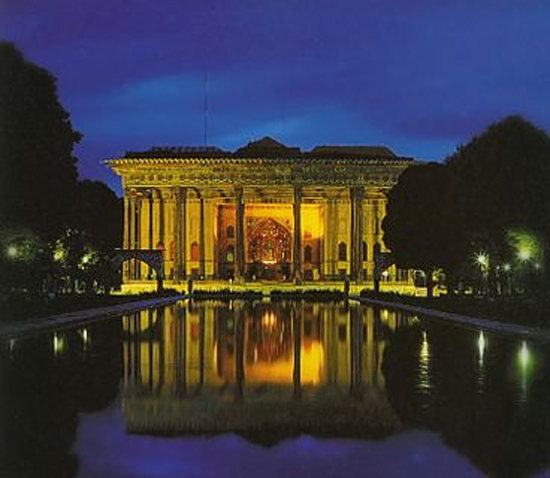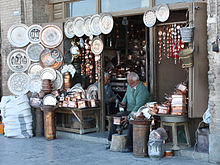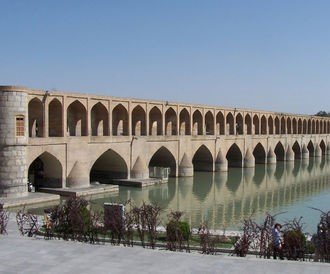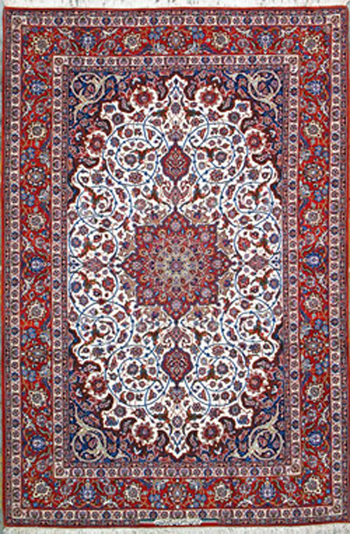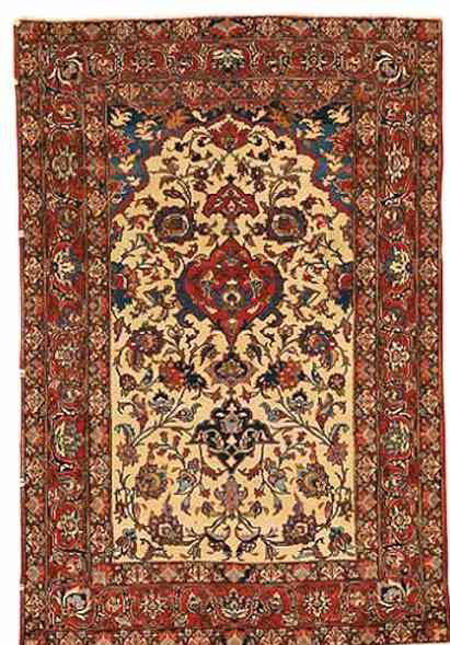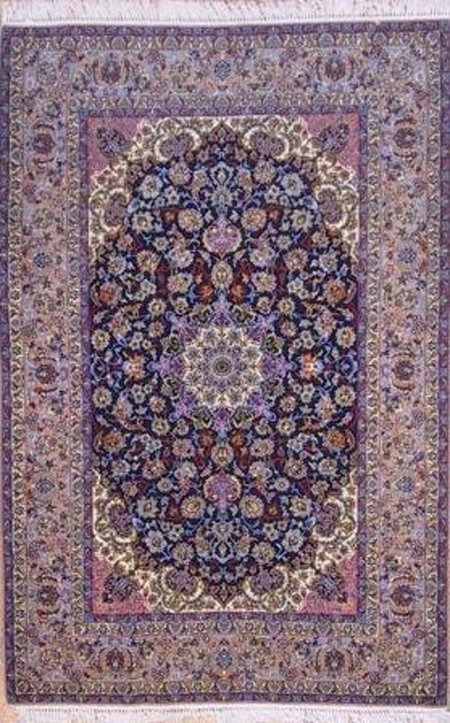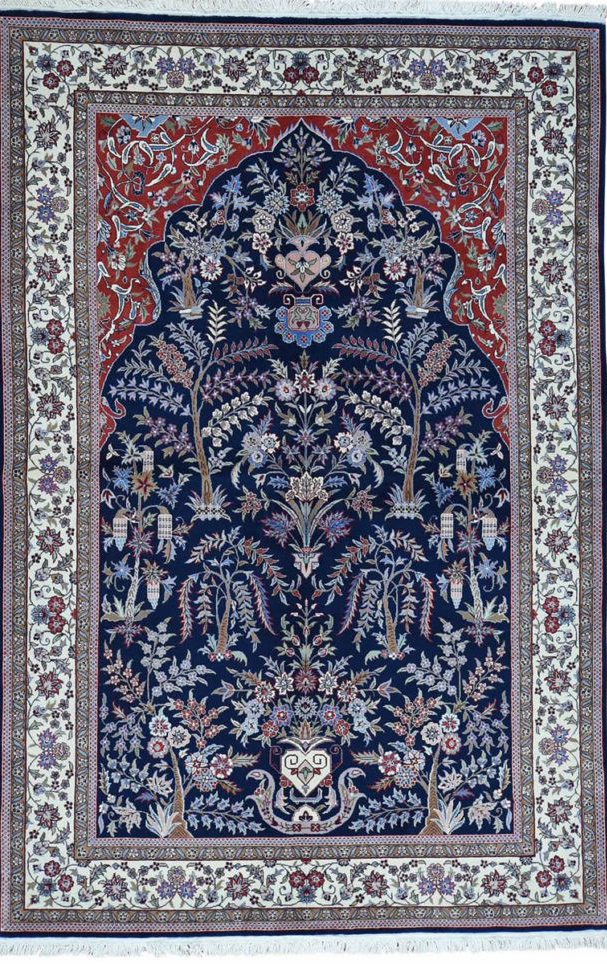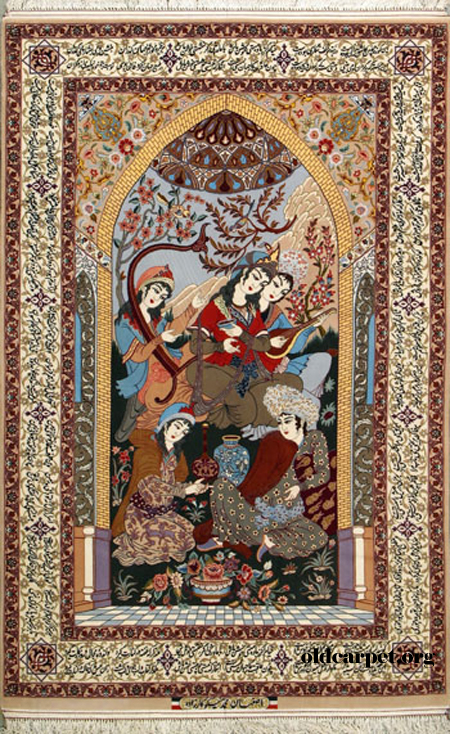ISFAHAN ORIENTAL RUGS
HISTORY and LOCATION
The history of Isfahan oriental rugs goes all the way back to early 16th century Persia during the rule of the Safavid dynasty (1502-1722). These were the ‘heydays’ of Persian weaving.
The Shah Abbas was particularly remembered as a great patron of the arts in the 16th century. Isfahan (also Esfahan), a city in west central Iran, was of great importance since the Shah moved the capital of Persia from Qazvin to Isfahan during his reign.
The reign of Shah Abbas is considered the ‘Golden Age of Persian Weaving.’ Antique Isfahan oriental rugs used sophisticated motifs in their designs and exhibited great technical skill in their weaving. Today, Isfahan is the 2nd largest city in Iran and an important industrial center.
Unfortunately, during the period of Afghan domination of Persia from the early 1700s through to around the 1920s, Isfahan rugs were rarely woven. Up until World War I, Isfahan had instead become the center of weaving for the fashion industry of Iran.
After World War I, a change in fashion trends in the world caused Isfahan to lose its place in the fabric industry. Fortunately, the weavers were encouraged to utilize the wool used for fabrics to reestablish the rug industry. Thus, the revival of weaving in Isfahan began. At the time, the new rugs were sold mainly to Europe, since the United States favored heavier styles of rugs which were able to be subjected to antique washes, bleaching, and for some, painting.
During the Great Depression, it became harder to sell rugs and the import of Merino wool became too expensive. The weavers began to switch to native Persian wool, a harder and more bristly wool than the Merino. It was not until after World War II that Isfahan oriental rugs began to be of a higher quality than those woven at the beginning of the revival because of the better materials used today.
RUG CONSTRUCTION
FOUNDATION
The foundation of Isfahan rugs consists of cotton
(most often found in older Isfahans), wool or silk depressed warps (up and down
cords) and 2 shoots of blue cotton sinuous wefts (side to side cords). (Depressed
warps occur when the wefts are pulled tightly from either side, displacing the warps
into 2 levels).
PILE
Wool yarn is tied to form the pile. The pile is close cut when finished which produces a clear design and thin yet strong rug construction. Some fine quality Isfahan oriental rugs can be found to have silk as well as metallic thread accents throughout the pile.
KNOT
The knot is asymmetrical (Persian) with 200 to 625 knots (and some higher) per square inch.
It is interesting to note that during the garment period, weavers of Isfahan used hand spun cotton, thus the foundation of the antique Isfahan oriental rugs naturally contained hand spun cotton wefts (left to right cords). Hand spun cotton has irregular areas where the thread is thicker in some spots and thinner in others. This irregularity can actually tend to make the rug more attractive, rather than be considered a negative characteristic.
ENDS
The end is finished with a kilim (a flat area of varying size woven at the end of the rug before the fringe is finished) with alternating red and blue threads, followed by a knotted fringe. (These threads measure the ‘kheft,’ another way to measure knots per square inch.)
SIDES
The sides have a single cord overcast in wool.
COLORS
Antique Isfahan rugs used reds and blues or indigo on ivory backgrounds. Most modern Isfahans (after WWII) use reds, blues, and ivory.
CAUTION: The red dye in Isfahan rugs can bleed when wet.
SIZES
It is most common to find Isfahan oriental rugs in sizes 5x7 or smaller, though larger rugs can also be found.
DESIGNS
The designs of Isfahan oriental rugs of the 16th century were influenced by other art forms of the time including calligraphy, bookbinding, and mosaic work, as well as by the poets of Persia. The city of Isfahan itself was, and still is, an inspiration for the weavers with its rich architectural history, including splendid mosques, palaces, and bridges as well as textiles, handicrafts, and fine arts.
The designs of the rugs are exquisitely intricate and curvilinear with delicate floral
motifs. Classical designs are also featured such as the vase, hunting motifs,
arabesque, scroll, as well as interlaced, spiraling vines known as islimis. These spiraling 'islimis' can incorporate other design elements and often finish at the center point of another motif, such as a palmette. Nains, Isfahans, and Ardebils are examples of rugs using this motif.
The most common design of Isfahan rugs features a center medallion on a floral-filled field, though hunting scenes and pictorials can also be featured.
THE IRANIAN FLAG & SIGNATURES
The incorporation of the Iranian flag into the first guard border (the inner and outer narrow borders guarding a larger border) at the top of the rug can occasionally be found.
It is also possible to find signatures woven into Isfahan oriental rugs along with the Iranian Flag.
BUYER BEWARE! Many of these rugs with signatures are 'fake' and added to the rug before it goes to a retail shop.
POLISH or POLONESE RUGS?
Certain Isfahan and Kashan rugs woven with silk, gold, and silver threads in Persia during the 16th to 18th centuries were commissioned by Polish noblemen and exported to the Polish-Lithuanian Commonwealth.
When these rugs were later resold to Western European buyers, they were often called Polish or Polonese Rugs, leading the buyers to believe their origin was actually Polish!
RUGS SIMILAR TO
ISFAHAN ORIENTAL RUGS
Several Iranian rugs can be confused with Isfahan oriental rugs. They are the Tabriz, the Kashan, and the Nain.
The Tabriz rugs have symmetrical knots (not asymmetrical as in Isfahan) and the wefts are more regular.
Kashans also have more regular wefts.
Nain rugs are actually a type of Isfahan.
WEAVERS and THEIR RUGS
Anyone visiting the city of Isfahan looking for Isfahan oriental rugs will come across the names of Seirafian, Haghighi, Enteshar, and Davari. These represent the master weavers of Isfahan and their heirs who helped with the rebuilding of the rug industry in their city.
Medallions, curvilinear floral motifs, and pictorial scenes, along with the possibility of silk and metallic detailed accents ensure an Isfahan oriental rug will be a beautiful and impressive addition to any room.
"The Cleanest Clean You've Ever Seen."
by
ABC Oriental Rug & Carpet Cleaning Co.
130 Cecil Malone Drive Ithaca, NY 14850
607-272-1566
